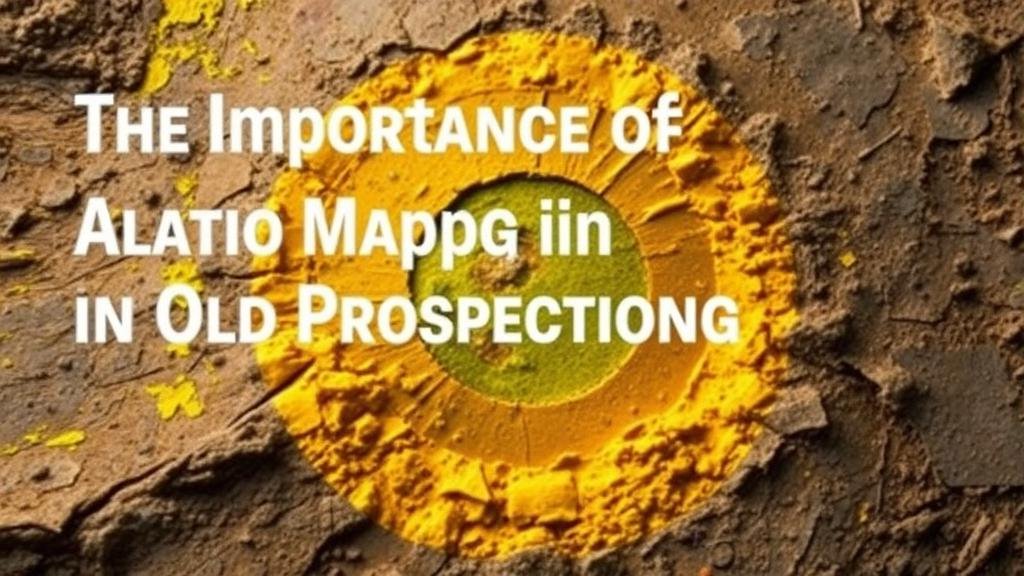The Importance of Alteration Halo Mapping in Gold Prospecting
The Importance of Alteration Halo Mapping in Gold Prospecting
In the realm of mineral exploration, particularly gold prospecting, understanding the geological framework of an area is critical to successful mining endeavors. One of the key methods employed in this field is alteration halo mapping. This geochemical approach enables prospectors and geologists to identify potential gold deposits through the examination of mineral alterations in host rocks surrounding these deposits.
Understanding Alteration Halos
Alteration halos are zones surrounding a mineral deposit that exhibit distinct changes in mineral composition due to hydrothermal or other geological processes. e changes can manifest as variations in color, texture, and mineralogy, which can indicate the presence of gold-bearing minerals.
- Hydrothermal Alteration: This occurs when hot, chemically active fluids circulate through rock, altering its mineral composition. Common alteration types include silicification, sericitization, and chloritization.
- Importance of Host Rocks: The type of host rock is crucial, as different rocks will react differently to alteration processes, influencing the potential for gold mineralization.
Utilizing Alteration Halo Mapping in Gold Prospecting
Alteration halo mapping involves several steps, blending fieldwork with modern technology. The process typically includes geological mapping, sampling, and the use of geochemical analysis to assess the concentration of elements associated with gold deposits.
- Geological Mapping: Prospectors create detailed maps of the terrain, documenting different rock types and any visible alteration features.
- Sampling and Analysis: Soil and rock samples are collected from various locations within the alteration halo and analyzed for gold and associated pathfinder elements like arsenic, antimony, and mercury.
For example, a successful exploration project in the Carlin Trend of Nevada utilized alteration halo mapping to locate significant gold deposits. By focusing on alteration zones, the team identified higher concentrations of gold and effectively targeted drilling operations, resulting in a substantial yield.
Real-World Applications and Case Studies
Several mining companies have effectively employed alteration halo mapping within their exploration strategies. A notable case is Barrick Golds use of this technique in its Nevada properties, where interpreting alteration patterns led to the discovery of multiple high-grade gold deposits. Such empirical evidence underscores the efficacy of this mapping method in increasing the likelihood of successful prospecting.
- Case Study – Goldstrike Mine: At the Goldstrike Mine, extensive alteration mapping allowed geologists to pinpoint valuable mineralization patterns. This approach significantly reduced exploration costs and improved drilling success rates.
- Case Study – Fruta del Norte: In Ecuador, alteration halo mapping facilitated the identification of a major gold-silver deposit by revealing geological features indicative of mineralization.
Challenges and Considerations
While alteration halo mapping is a powerful tool, it is not without challenges. Variability in geological conditions and the spatial distribution of alteration can affect the accuracy of predictions. Also, prospecting regions may present difficulties in accessibility and environmental considerations.
Another challenge lies in the detection limits of geochemical analyses. Low concentrations of pathfinder elements may produce ambiguous results, making it essential for prospectors to combine multiple methods for a comprehensive assessment.
Actionable Takeaways
Prospective gold miners and geologists can maximize their exploration success by:
- Useing rigorous alteration halo mapping techniques to guide drilling and sampling efforts.
- Employing geochemical analysis to identify optimal locations based on alteration patterns.
- Staying informed about advances in geospatial technologies that enhance mapping accuracy and efficiency.
To wrap up, alteration halo mapping is an indispensable method in the toolkit of modern gold prospecting. By carefully analyzing alteration zones surrounding mineral deposits, prospectors can substantially increase their chances of discovering economically viable gold resources.



